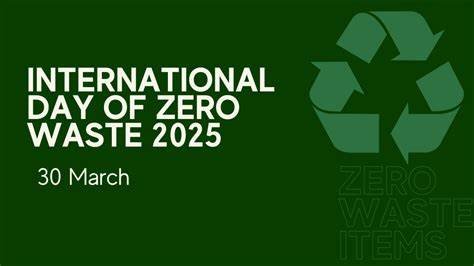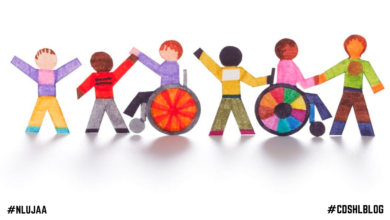International Day of Zero Waste: Building a Sustainable Future for All

Today is International Day of Zero Waste, dedicated to spreading awareness of the harmful effects of waste in our environment. Our environment is on the verge of destruction due to our activities such as unsustainable production and consumption patterns. This commemoration was created by the UN General Assembly in 2022 and emphasizes ways to reduce pollution and safeguard the health of people and the environment.
From packaging and electronics to plastics and food, households, small businesses, and public service providers produce between 2.1 billion and 2.3 billion tons of municipal solid waste annually. With about 62% of municipal solid waste being managed in controlled facilities and 2.7 billion people lacking access to solid waste collection, global waste management systems are unprepared to handle everything. Therefore, the waste situation requires immediate action.
With the theme “Towards zero waste in fashion and textiles,” this year’s International Day of Zero Waste highlights the necessity of taking action in the industry to reduce waste and promote the creation of a more sustainable waste and waste-free world.
History of the International Day of Zero Waste
Rising concerns about the global waste crisis in 2017 sparked increased awareness within environmental communities, leading to the idea of a dedicated day to promote zero-waste initiatives. The United Nations Environment Assembly (UNEA) formally adopted this initiative in 2022.
Recognizing the urgency of addressing waste management, the UNEA passed a resolution on December 14, 2022, officially declaring March 30 as the International Day of Zero Waste. It was first celebrated in 2023 and the United Nations Environment Programme (UNEP) and UN-Habitat collaboratively facilitate this observance, driving action towards a waste-free environment.
Why International Day of Zero Waste Matters
The International Day of Zero Waste highlights the importance of sustainable consumption and production while raising awareness of how zero-waste initiatives contribute to achieving the 2030 Agenda for Sustainable Development. The choices we make today regarding waste and sustainability shape our world and the environment our children will inherit.
The waste crisis plays a major role in global challenges like climate change, biodiversity loss, and pollution, all of which affect the health and well-being of our children.
Each year, about 2.24 billion tons of solid waste are generated, yet only 55% is appropriately managed. Also, around 931 million tons of food go to waste annually, and up to 14 million tons of plastic end up in aquatic ecosystems.
Zero-waste initiatives are essential for responsible waste management, helping to reduce, prevent, and manage waste effectively. These efforts protect the environment and also support food security, public health, and overall well-being.
This day serves as a crucial platform to emphasize the role of zero-waste initiatives in building a sustainable future. Supporting zero-waste efforts contributes to the Sustainable Development Goals of 2030 which address waste reduction, food loss, and electronic waste management.
The Effect of Waste on our Environment
Waste in our environment is dangerous to our health and that of our children. There has been a growing rise in the production and use of textiles than sustainability initiatives in the industry, which has serious negative consequences on the environment, the economy, and society. According to a study, 92 million tonnes of textile waste were produced globally due to the manufacture of textiles between 2000 and 2015.
For this situation to be managed, we need to shift to more sustainable ways of producing textiles. By embracing recycling, reuse, and repair, consumers can lessen their effects on the environment. Also by investing in high-quality clothing instead of chasing every fashion trend that may be harmful to our environment, we conserve our resources and at the same time protect the environment.
Health Implications for Our Children When We Poorly Dispose Waste
Waste is a threat to the health of God’s precious children. When communities do not take waste management seriously, it could affect children’s health.
1. Waste in our environment leads to air pollution and respiratory issues
Children who live near landfills are at risk of contracting diseases and have breathing problems because the air is polluted.
2. It leads to water pollution
When plastics find their way into water bodies, they contaminate the water making them unsafe to drink. Children in those areas whose source of drinking water is the river are at risk of developing waterborne diseases.
3. It can lead to toxic exposure to chemicals resulting in developmental issues.
If we do not dispose of waste properly and chemicals like lead and mercury are washed into the water bodies, they can come in contact with children leading to health issues like brain damage, increased risk of cancer, etc.
4. Children are exposed to plastic pollution and its attendant health issues.
Microplastics are very dangerous to our health. Children living in an environment with poor waste management can ingest contaminated food which has grave health implications.
Empowering Children Through Zero-Waste Initiatives
Parents and schools should teach children the importance of engaging in zero-waste practices. Learning these safe practices fosters a sense of responsibility and motivates them to participate in promoting a cleaner, healthier environment. They should be taught simple habits like reducing plastic use, recycling, and reusing materials. Schools, communities, and families play a crucial role in teaching children the importance of waste management to create a healthier environment.
Conclusion
Today is a call to action for every hand to be on deck to protect our environment by engaging in safe practices such as recycling so that we can create a sustainable future for our children. By prioritizing zero waste today, we ensure that our children grow up in a world with cleaner air, and healthier ecosystems.





